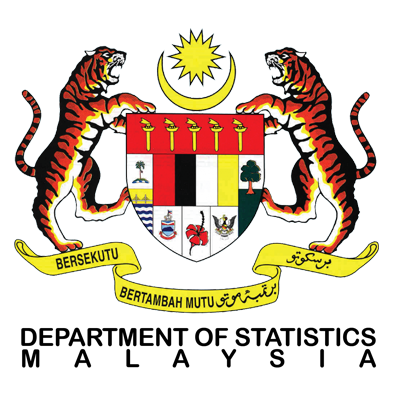Labour Force
- Home
- Statistics
- Labour Market
- Labour Market Information
- Labour Force
Key Statistics of Labour Force in Malaysia, April 2020
Key Statistics of Labour Force in Malaysia, March 2020 8 May 2020
Principal Statistics of Labour Force, Malaysia, First Quarter (Q1) 2020 29 April 2020
Labour Force Survey Report, Malaysia, 2019 14 April 2020
Key Statistics of Labour Force in Malaysia, February 2020 13 March 2020
Key Statistics of Labour Force in Malaysia, January 2020 7 February 2020
Key Statistics of Labour Force in Malaysia, December 2019 Show all release archives
Overview
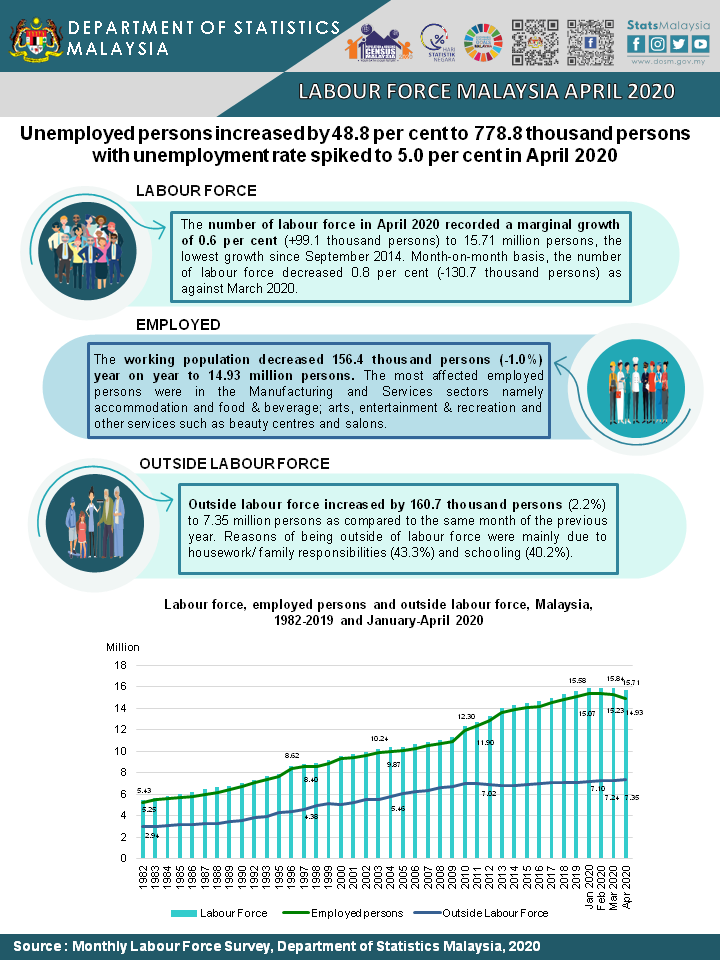
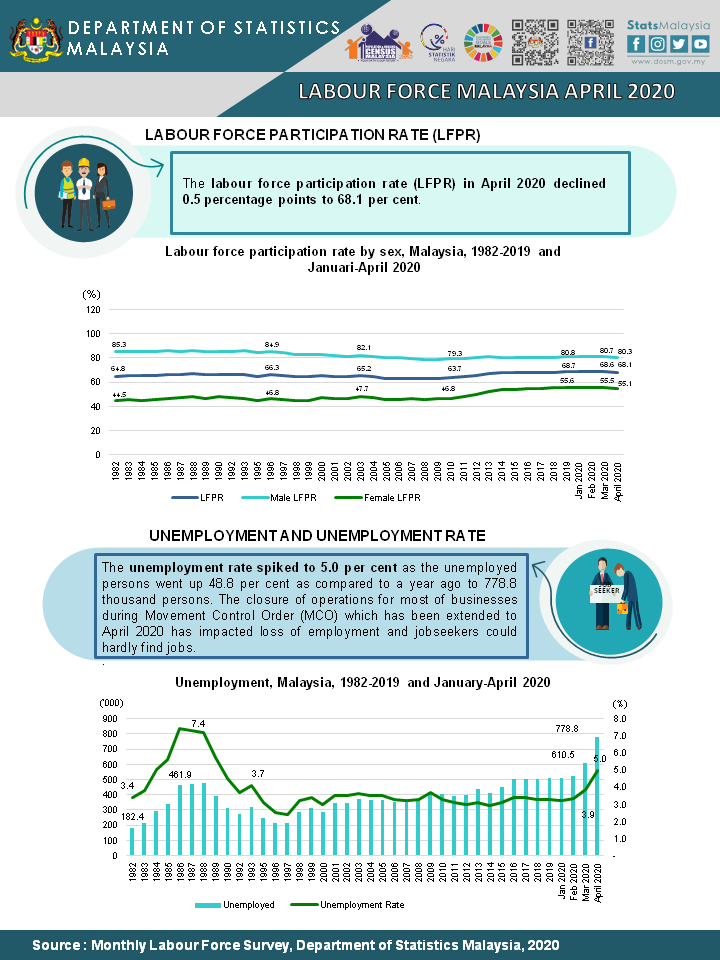
Labour Force
The number of labour force in April 2020 recorded a marginal growth of 0.6 per cent (+99.1 thousand persons) to 15.71 million persons, the lowest growth since September 2014. Month-on-month basis, the number of labour force decreased 0.8 per cent (-130.7 thousand persons) as against March 2020.
Employed
The working population decreased 156.4 thousand persons (-1.0%) year on year to 14.93 million persons. The most affected employed persons were in the Manufacturing and Services sectors namely accommodation and food & beverage; arts, entertainment & recreation and other services such as beauty centres and salons.
Outside Labour Force
Outside labour force increased by 160.7 thousand persons (2.2%) to 7.35 million persons as compared to the same month of the previous year. Reasons of being outside of labour force were mainly due to housework/ family responsibilities (43.3%) and schooling (40.2%).
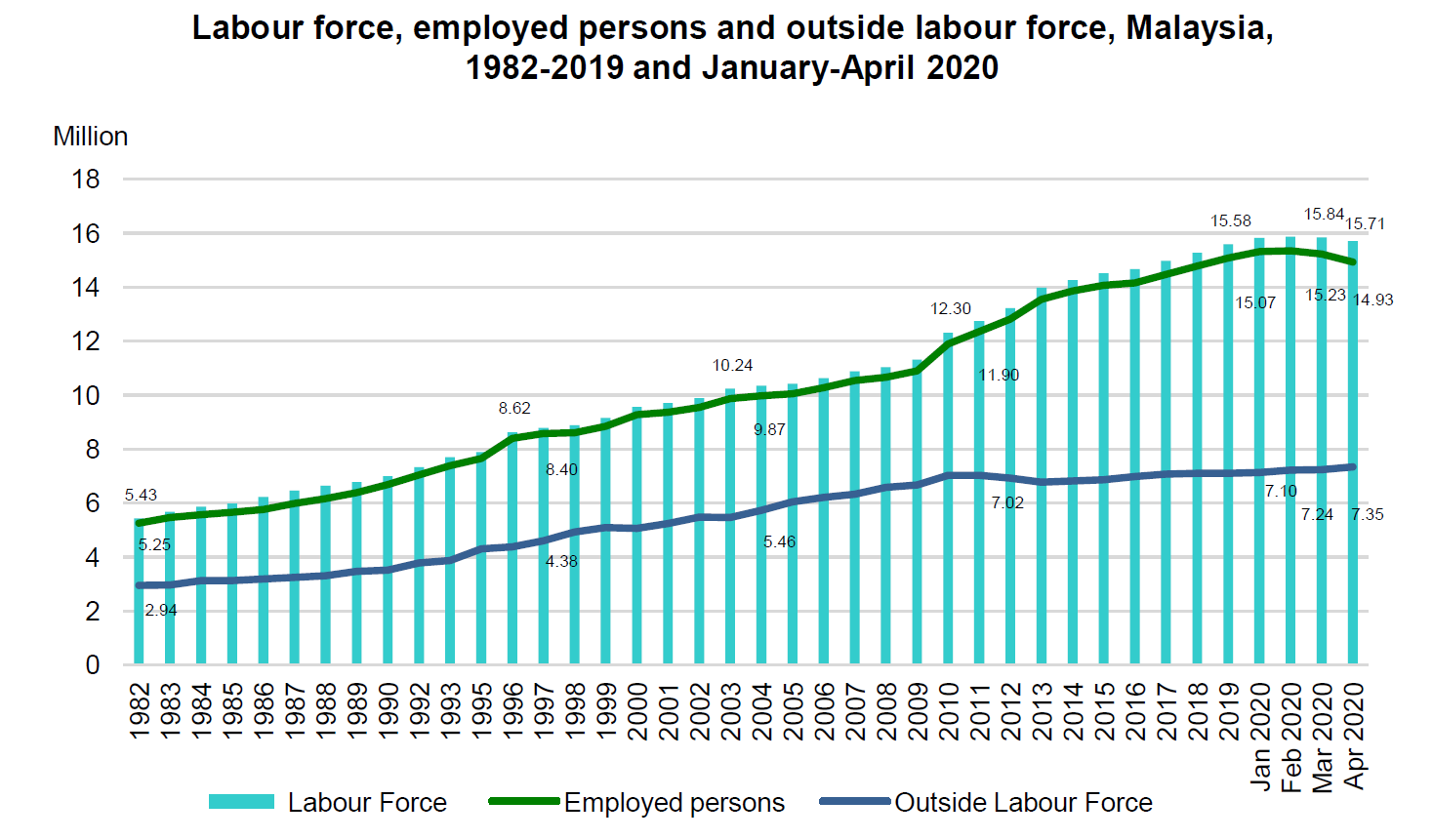
Labour force participation rate (LFPR)
The labour force participation rate (LFPR) in April 2020 declined 0.5 percentage points to 68.1 per cent.
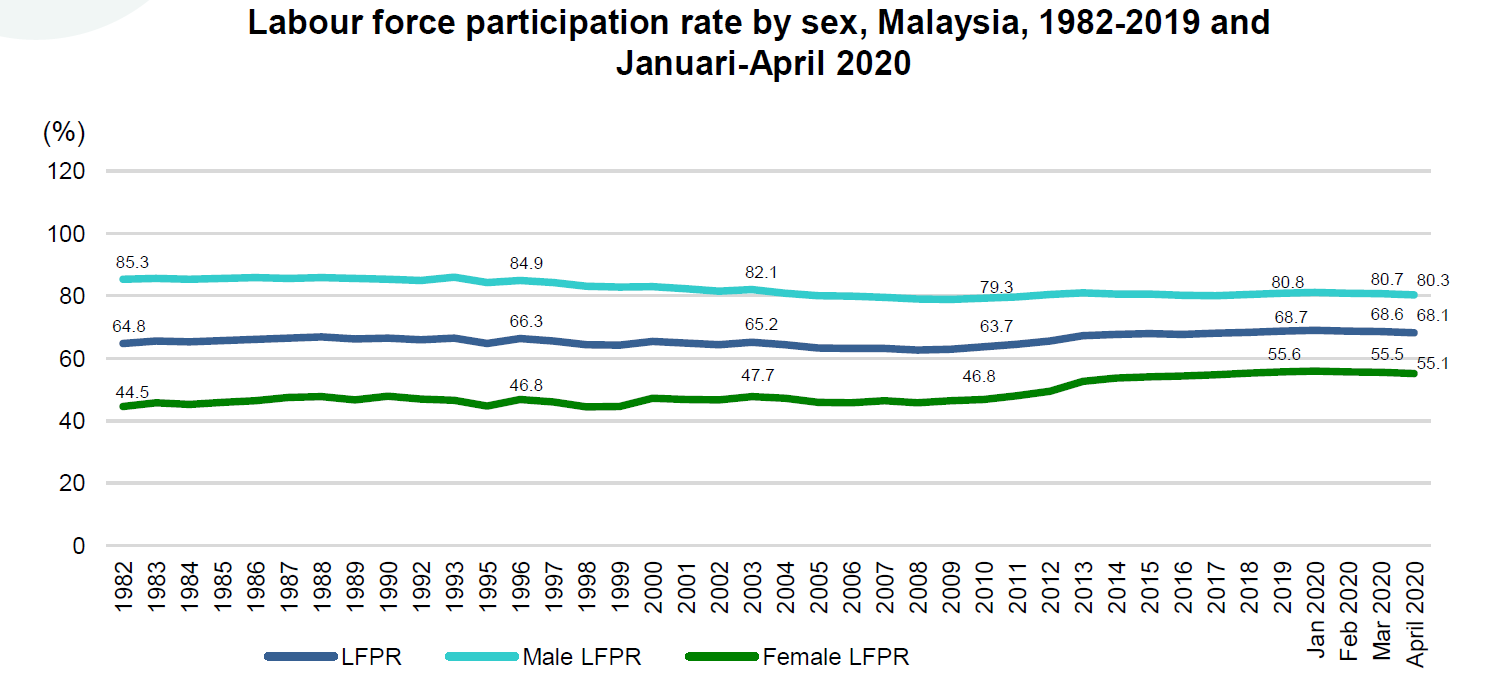
Unemployment rate
The unemployment rate spiked to 5.0 per cent as the unemployed persons went up 48.8 per cent as compared to a year ago to 778.8 thousand persons. The closure of operations for most of businesses during Movement Control Order (MCO) which has been extended to April 2020 has impacted loss of employment and jobseekers could hardly find jobs.
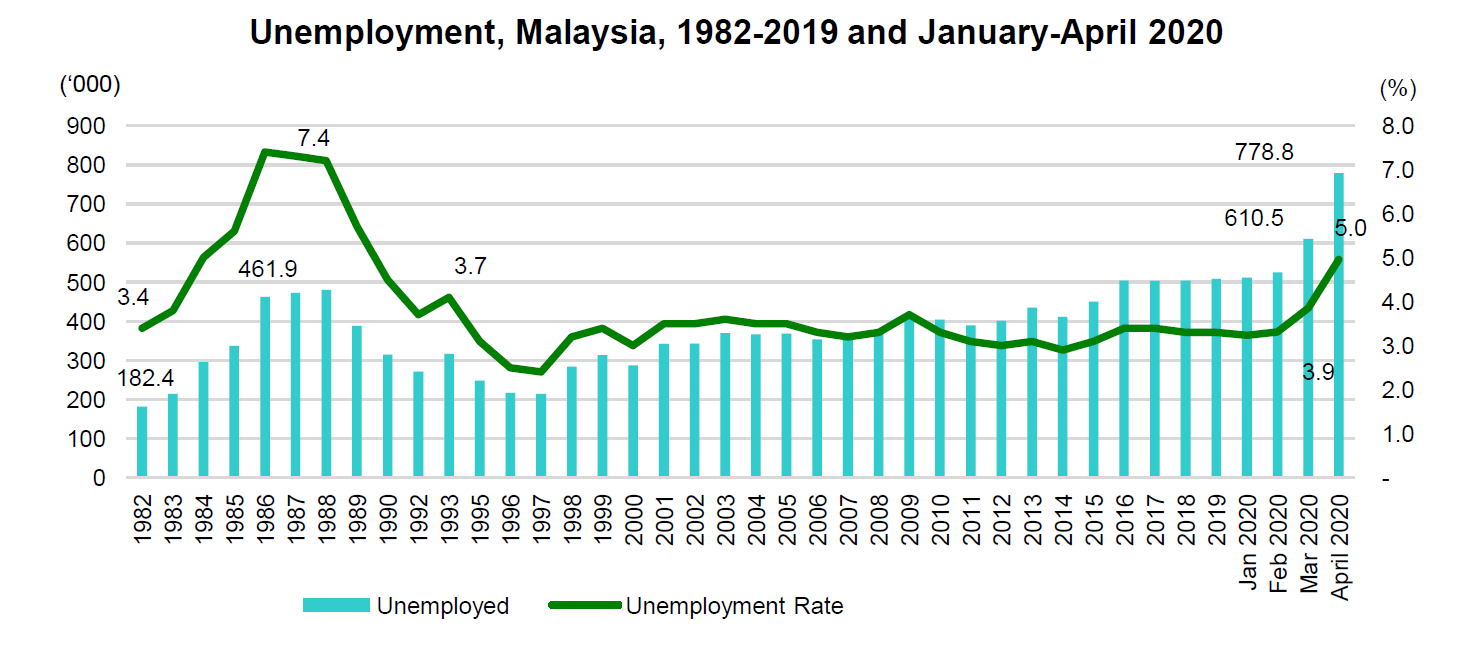
TECHNICAL NOTES
This information is derived from the Labour Force Survey (LFS) which was conducted to collect information on the structure and distribution of labour force, employment and unemployment.
The survey population cover persons who live in private living quarters and excludes persons residing in institutions such as hotels, hostels, hospitals, prisons, boarding houses and workers residing in construction work site.
The survey comprises of the economically active and inactive population. To measure the economically active population, the LFS uses the age limit of 15 to 64 years. The economically active population comprises of those employed and unemployed whereas those who are inactive is classified as outside the labour force.
LFS uses the actual status approach, where a person is classified on the basis of his labour force activity during the reference week.
- Labour force refers to those who, during the reference week are in the 15 to 64 years (in completed years at last birthday) and who are either employed or unemployed.
- Employed refers to all persons who, at any time during the reference week worked at least one hour for pay, profit or family gain (as an employer, employee, own-account worker or unpaid family worker). Also considered as employed are persons who did not work during the reference week because of illness, injury, bad weather, leave, labour dispute and social or religious reasons but had a job, farm, enterprise or other family enterprise to return to. Also included are those on temporary lay-off with pay who would definitely be called back to work.
- Unemployed
Unemployed refers to those who do not have a job but are interested to work. There are two groups of unemployed that is the actively unemployed and inactively unemployed.
- Outside Labour Force
All persons not classified as employed or unemployed as stated above are classified as outside labour force. Includes housewives, students (including those going for further studies), retired, disabled persons and those not interested in looking for a job.
- Labour Force Participation Rate
The economic activity of a population depends on the demographic characteristics of that population. The proportion of economically active population, therefore, differs between sub-groups of that population. These variations are measured by specific activity rates termed as labour force participation rate. Labour force participation rate is defined as the ratio of the labour force to the working age population (15 to 64 years), expressed as percentage.
- Unemployment rate is the proportion of unemployed population to the total population in labour force. This rate measures the percentage of unemployed population in the labour force.
Population Benchmarks
Population by characteristics of age group, ethnicity and state were used as benchmarks to produce labour statistics.
Starting with the monthly release of the Principal Statistics of Labour Force, Malaysia, January 2016, the principal statistics of labour is estimated based on the current population estimates as compared to the previous series which used population projections based on the Population and Housing Census of Malaysia, 2010. This rebase is to obtain statistics that is more consistent with current population structure.
Released By:
DATO' SRI DR. MOHD UZIR MAHIDIN
CHIEF STATISTICIAN MALAYSIA
DEPARTMENT OF STATISTICS, MALAYSIA
![]() DrUzir_Mahidin
DrUzir_Mahidin ![]()
![]() Dr_Uzir
Dr_Uzir
15 June 2020
Contact person:
Mohd Yusrizal bin Ab. Razak
Public Relation Officer
Strategic Communication and International Division
Department of Statistics, Malaysia
Tel : +603-8885 7942
Fax : +603-8888 9248
Email : yusrizal.razak[at]dosm.gov.my
Subscribe
Newsletter
Subscribe to our newsletter and stay updated
For interviews, press statement and clarification to the media, contact:
Baharudin Mohamad
Public Relation Officer
Email: baharudin[at]dosm.gov.my
Phone: 03 8090 4681
Not found what you looking for? Request data from us, through
Go to eStatistik
Email: data[at]dosm.gov.my
Phone: 03 8885 7128 (data request)
